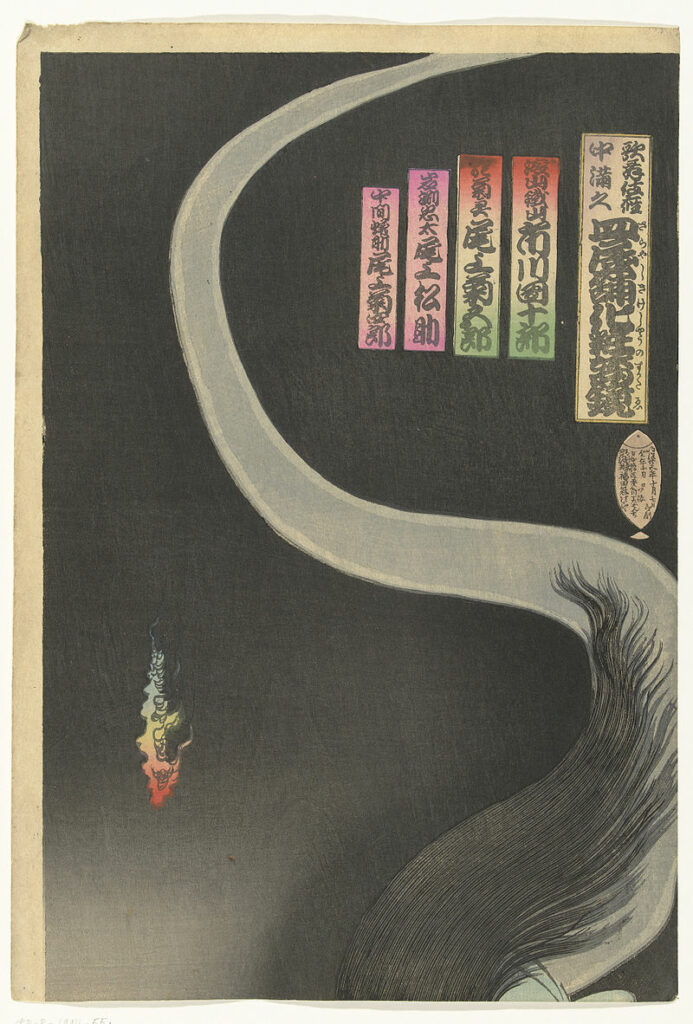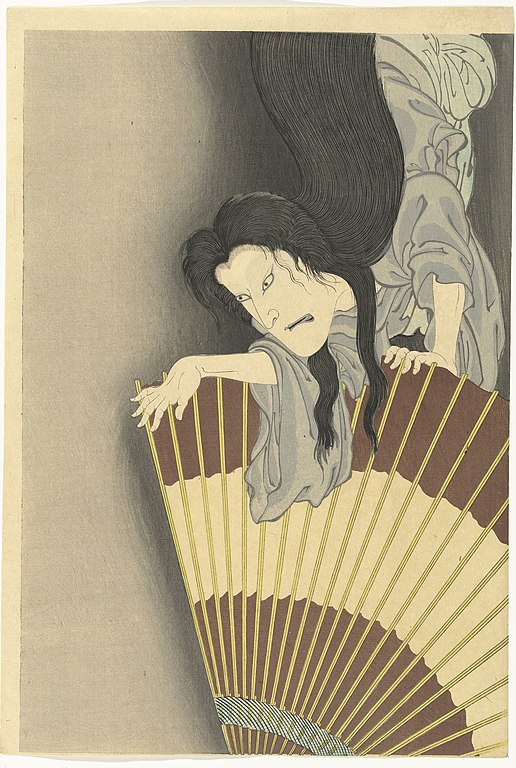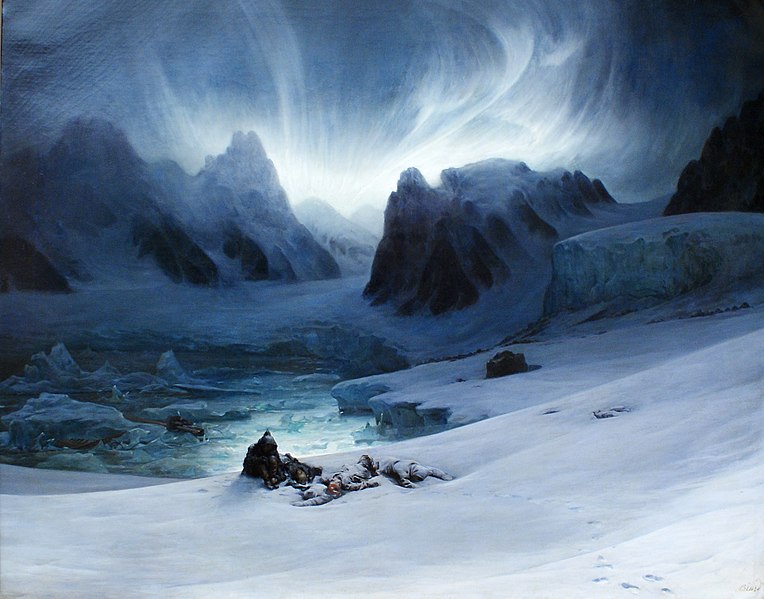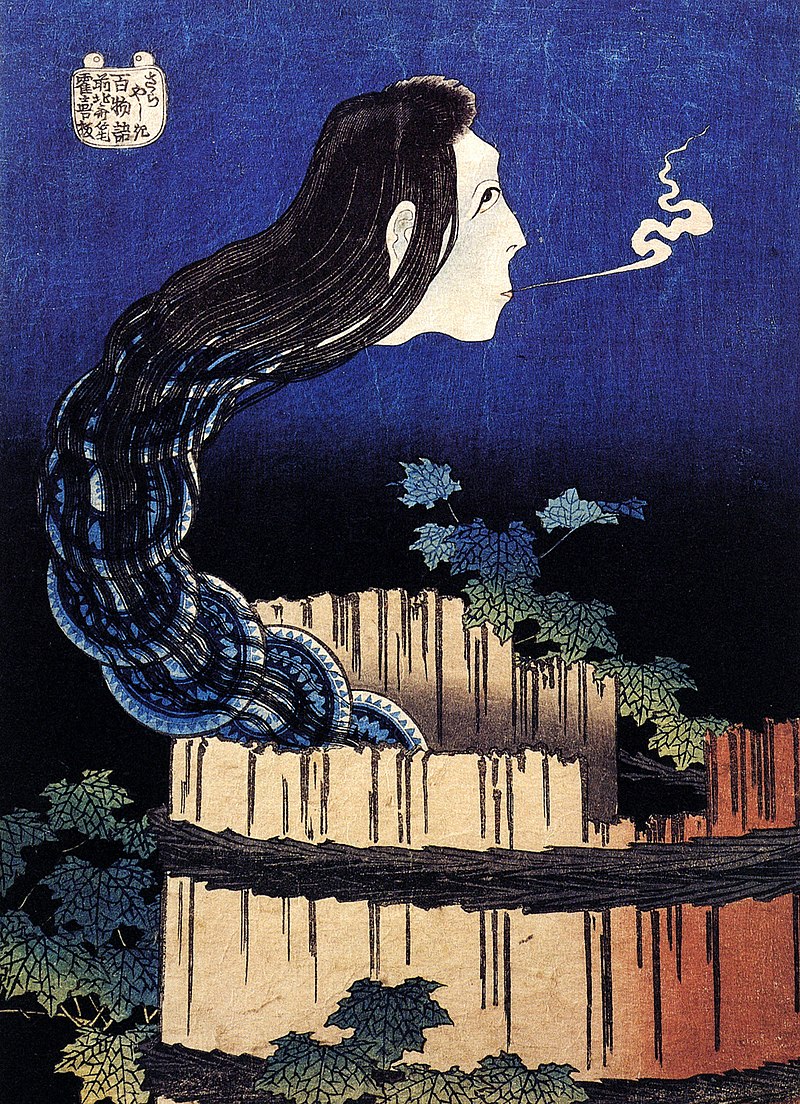
One Hundred Ghost Stories Plate I:
The Hakumonogatari Kaidankai inspired lots of artists, among them one particularly famous japanese artist: Master Katsushika Hokusai (1760 – 1849). He created five woodblock prints based on the traditional tales of the Yakumonogatari Kaidankai. We will never know why he created only five prints. I am a bit sad about it and would have loved to see more of them because they are fascinating. But it is what it is.
The Mansion of the Plates (Sara-yashiki)
Hokusai created the first of the series after the Edo version of an old ghost story in Kabuki plays, the Banchō Sarayashiki (番町皿屋敷, The Dish Mansion at Banchō).
„The story of the death of Okiku (お菊) first appeared as a bunraku play called Banchō Sarayashiki in July 1741 at the Toyotakeza theater.[2] The familiar ghost legend had been adapted into a ningyō jōruri production by Asada Iccho and Tamenaga Tarobei I. Like many successful bunraku shows, a kabuki version followed and in September 1824, Banchō Sarayashiki was staged at the Naka no Shibai theater starring Otani Tomoemon II and Arashi Koroku IV in the roles of Aoyama Daihachi and Okiku.“ (Wikipedia)

The first plate is the story about a maid named Okiku. She accidentally broke one (or all plates, depending on the version of the story) of a set of elegant Korean plates. Her master Tessan Aoyama, a Samurai, was infuriated and threw her into a well where she drew her last breath. She returned as a Yūrei (幽霊), a ghost to haunt her old house. Every night she could be heard desperately counting the plates: “One…two…three…nine… I can’t find the last one!” She finally disappears only after the monk, her master has called for help, adds “TEN”. Another version tells us that her master cut off her finger and threw her into his dungeon from where she escaped. She threw herself into the well and was turned into a Yokai.

The Okiku tale is quite popular and was established in 1795 after a particularly nasty infestation of worms, covered in fine threads that could be found in old wells, the Okiku bug. The threads are believed to be the remnants of the fabric used to bind her. There are variations of this tale floating around.
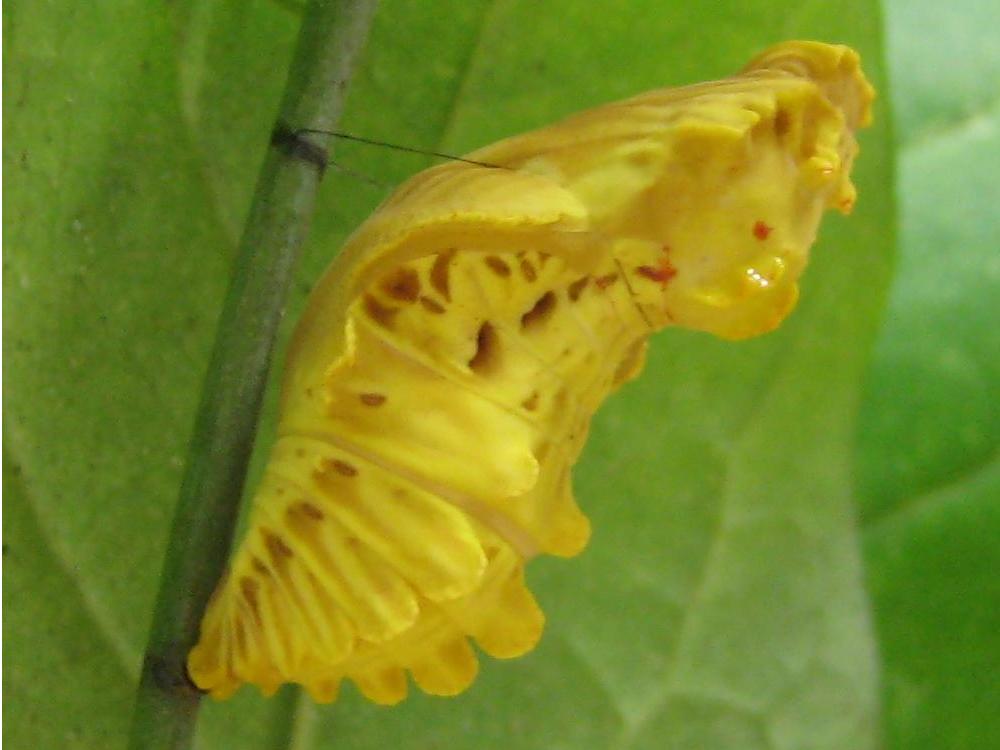
In my opinion it is quite ingenious how Hokusai creates a rather minimalistic depiction of the scene of Okiku returning to life. Okiku with her long black hair, floating down her back, rises from the dilapidated well where she found her untimely end. A tiny cloud of smoke escapes her mouth, her face is calm and serene. Her body however is made out of the plates that caused her untimely passing: Her body resembles a snake with the cursed plates serving as her body. She resembles the Nure-onna ((濡女 “wet woman”), a frightening, cannibalistic water creature with the head of a woman and the body of a snake. But the scary creature also reminds the viewer of the okiku insects that plagued Japan at the end of the 18th century: The Okiku insect (お菊虫, okiku mushi), the Chinese windmill butterfly (Byasa alcinous), in its pupal stage is said to resemble a woman with her hands bound behind her back. It is covered in fine threads which are making them look like they have been bound. It seems that Hokusai was inspired by the segmented body of the caterpillar and translated it into a stack of dishes. That way he was able to create a visual reference to a scary water-creature, the tortured soul of a powerless servant and the real-world insect.
Quite ingenious, don’t you agree?
The adaption of Kabuki plays by artists was quite common so other ukiyo-e artists created other, quite different and interesting variations on the theme:
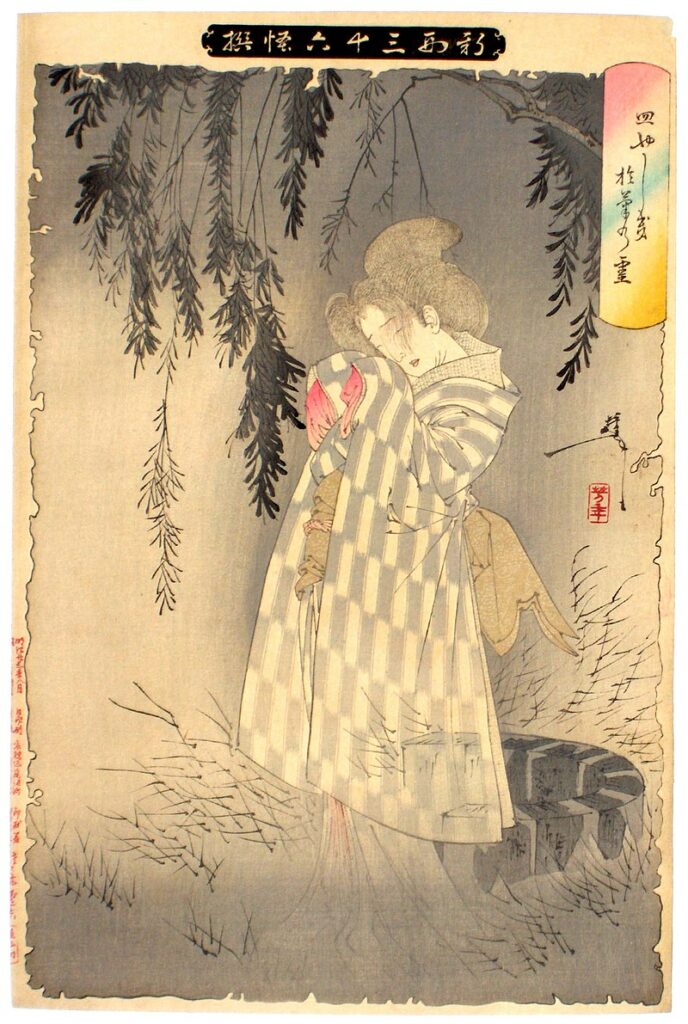
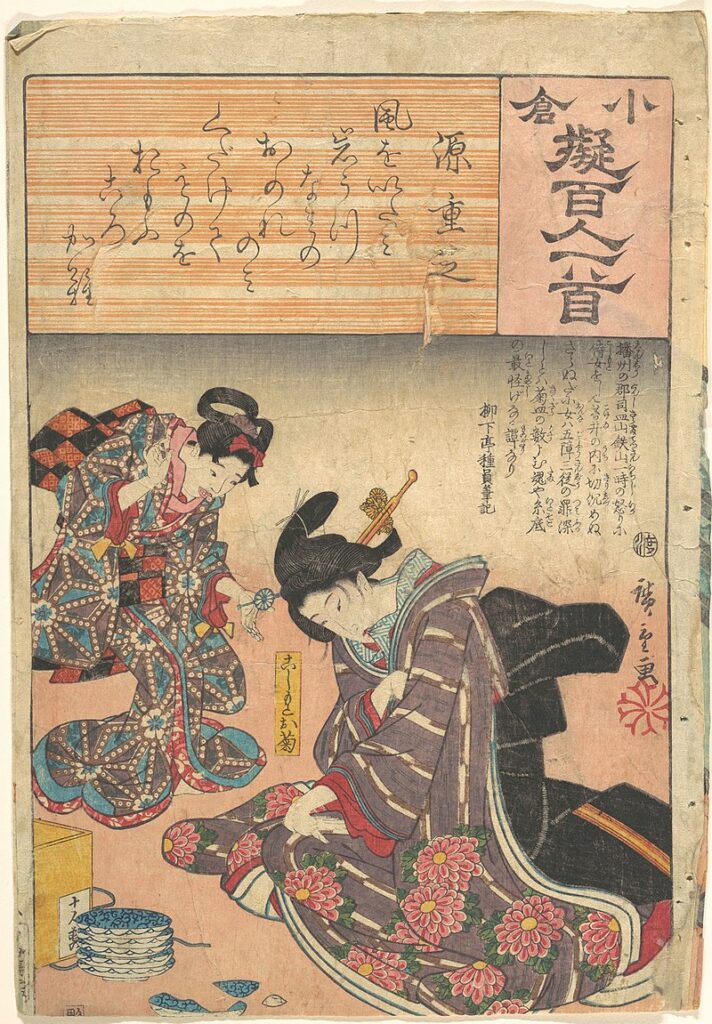
Dimensions, 13 1/2 × 9 1/2 in. (34.3 × 24.1 cm), Metropolitan Museum of Art
